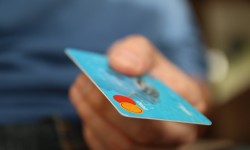The more you use the Internet, the more you appreciate its convenience and access to services like banking and shopping. Unfortunately, the Internet is also a main hub for exploitation that can sometimes seem surprisingly genuine. Yes, I’m talking about internet fraud.
How it works: The most common fraud arrives by email, claiming to be from your bank, credit card company, or some other service you frequent. It usually asks you to send your account details, and sometimes your PIN, either by return email or through a website. Various tricks are used to lower your guard, such as 'security and maintenance upgrades,' 'investigation of irregularities,' or 'bills/charges due.'
Fraudsters typically scan the Internet for email addresses or generate them at random. They don't need an online service provider's mailing lists. Some may send just a few dozen emails while others send thousands. Even if only a few unsuspecting people bite, it can be worth the effort to break into their accounts.
Here are some of the tell-tale signs of typical frauds along with some safety checks you can use to avoid them!
- Only use your PIN through the official log-in site offered by your provider.
- Check official websites for announcements.
- Use only secure sites for keying in financial or personal information.
- Take common sense privacy precautions, such as avoiding financial transactions at internet cafes and libraries.
- Act quickly if you think you've been conned. If you get a suspicious email, tell your service provider.
If you have sent any details through an email or website that you're a bit worried about, contact your bank, credit card company or service provider right away!
Hope you found this information helpful. Please do not hesitate to contact me if I might be of any assistance to you!
Published March 22nd, 2017






